Apraxia Kids
Research Grants
How Childhood Apraxia of Speech Affects My Life: Perspectives of Children and Caregivers
Dr. Michelle Turner Swartz, Dr. Elaine R Hitchcock, Dr. Kathryn Cabbage
September, 2023 – August, 2025
While it is widely accepted that one’s social-emotional well-being plays an important role in overall quality of life (World Health Organization [WHO], 2007), the effects of CAS on a child’s social-emotional status are poorly understood. Recognizing that children with CAS potentially experience limitations in life events (Gillon & Moriarty, 2007), this study will investigate the social and emotional experiences of children with CAS through multiple phases that include focus groups, interviews, and surveys of both children with CAS and their primary caregiver. The results may ultimately offer critical insights to improve long-term outcomes for this population. The first step will be a series of separate child and caregiver focus group sessions. Using the information generated from the focus groups, each participant will complete an individual one-on-one interview with the principle investigator to further explore the participant’s lived experiences. Lastly, a survey will be conducted where participants will complete a psychosocial assessment battery regarding themselves (child) or their child (caregiver) and a novel survey regarding the communication experiences of themselves (child) or their child (caregiver). This novel communication survey will be constructed using information generated from the focus groups and individual participant interviews. Knowing the social-emotional status of a child with CAS could potentially assist a clinician in appropriate treatment decisions, clinician-patient interaction, and possible need for referral to other services (e.g., counseling and/or support groups). Furthermore, the child’s social-emotional status may impact their motivation during therapy, responsiveness to treatment, and attitudes regarding use of communication outside the therapy setting (Hitchcock et al., 2023). The research team believes that investigating other characteristics of children with CAS beyond speech production may have a positive long-term impact on the quality of life for children with CAS.
A Crossover Study of Dynamic Temporal Tactile Cueing in Cantonese-English Bilingual children with Childhood Apraxia of Speech
Eddy Wong PhD student at Hong Kong Poly Technic University mentored by Dr. Min Wong and Dr Shelley Velleman
September 2023 through August 2024
Dynamic Temporal Tactile Cueing (DTTC) is a motor-based treatments designed for children with severe CAS who may have limited verbal output (Strand, 2020). It applies the principles of motor learning and focuses on speech movement gestures in the context of functional words or phrases (Strand, 2020). Results of single-case or multiple baseline studies have suggested that Dynamic Temporal Tactile Cueing (DTTC) is an efficacious treatment for English speakers with CAS (Strand & Debertine, 2000; Strand et al., 2006). Some treatment approaches have been investigated in non-English speakers with CAS, such as DTTC in German (Leonhartsberger et al., 2022) and Mandarin (Liu et al., 2019); Rapid Syllable Transition (ReST) in Italian (Scarcella et al., 2021) and Korean (Kim et al., 2015). These treatment approaches have also been examined in Cantonese speakers with CAS. Given that the current evidence for the available treatments is mainly based on monolinguals (i.e., either English or Cantonese), it is unknown if these treatment approaches work equally well in both languages of English-Cantonese bilingual speakers with CAS and whether generalization will occur across languages. The aim of this study is to investigate DTTC treatment in four English-Cantonese bilingual speakers with confirmed CAS. Two versions of DTTC treatment (i.e., DTTC in English [DTTC-E] and DTTC in Cantonese [DTTC-C]) will be given to each of the bilingual participants, in a randomly allocated order of treatment. Each participant will be given either DTTC-E first or DTTC-C first followed by a two week break with no treatment to obtain probe data and then a second round of DTTC treatment in the other language. One week and one month post treatment probes will be collected. The probes will examine segments (phoneme accuracy, syllable complexity and intelligibility) and suprasegmental features of lexical stress (English) and lexical tone (Cantonese). It is expected that the participants will demonstrate treatment and generalization effects in both segments and lexical stress in English and segments and lexical tone in Cantonese. The results will validate evidence-based intervention approaches to English-Cantonese bilingual speakers and Cantonese monolingual speakers with CAS.
Research Grant Application
Apraxia Kids’ primary interest is in high quality scientific research that, upon completion, will be suitable and acceptable for peer-reviewed publications and is clinically applicable. All topics relevant to childhood apraxia of speech will be considered. However, Apraxia Kids is particularly interested in funding proposals that address one or more of the following topics across diverse populations including race/ethnicity, socio-economic status, language, age, and comorbidity:
- Early diagnosis and treatment of children with CAS.
- Treatment approaches for CAS that include biophysical evidence alongside behavioral evidence.
- Looking at the whole child, especially comorbid conditions and social emotional aspects of CAS across the lifespan including teens and young adults.
- The effects of CAS on early phonological awareness skills and literacy development.
- The role of perception in the development of speech sound production in children with CAS.
- Prognosis for children with CAS.
- Child and parent reported outcome measures.
Research teams should include a person with lived experience of CAS as a full member of the team from the beginning set up of the study through the analysis of the results. This year, Apraxia Kids is encouraging researchers who apply for our grant to include either a parent of a child with CAS or an adult with CAS on their team.
Apraxia Kids is interested in funding Principal Investigators at different career stages including those with research doctorates, and student researchers at all levels – PhD, master’s, and undergraduate students. Therefore, there are three different Clinical Research Grant competitions available.
The Clinical Research Grant Applications are now open! The deadline for Letters of Intent for all three levels is March 11, 2024. Click on the link for the appropriate level to see all timelines and application requirements.
- The Clinical Research Grant competition is for investigators with research doctorates and includes Post Doctoral Fellows. (up to $50,000)
- The Doctoral Student Clinical Research Grant competition is open to PhD students. (up to $10,000)
- The Undergraduate/Masters Student Clinical Research Grant competition is for undergraduate and master’s level students from historically underrepresented groups. This competition is an initiative by Apraxia Kids in a concrete effort to contribute to diversifying our profession in the area of CAS research. (up to $5,000)
Research Grants Timeline
Each year, Apraxia Kids provides funding to researchers who submit proposals for research projects. Over the years, these studies have proven to be invaluable to the apraxia community in supporting assessment and treatment decision-making. Since the program’s inception in 2009, Apraxia Kids has awarded over $500,000 to fund research studies focused on childhood apraxia of speech.
Principle Investigator: Dr. Chantelle Highman
Other Investigators: Dr. Megan Overby, Dr. Suze Leitao, Dr. Karen Wylie, and Dr. Tricia McCabe
Research Organization: Curtin University
State/Province/Country: Perth, Western Australia
Year of Funding: 2022
Funding Amount: $12,575
Title: Investigating Early Experiences of Intervention for Children with CAS: Parent Perspectives
Summary: While we have data on what services are provided to children with childhood apraxia of speech (CAS), we do not have a parental perspective on what was provided, and whether it met their needs and those of their children. The present proposal initiates an exploration of two environmental factors relevant to children with childhood apraxia of speech (CAS): 1) parents’ desired long term successful outcomes (attitudes) for their child with CAS, and 2) parents’ perspectives of early intervention services their child received in the first 3 years of life. The parents from 15 children aged 3;0 to 6;11 years with CAS across the United States and Australia will be recruited from participants currently engaged in a Dynamic therapy study. The parents will participate in a structured interview to gain insight into the environmental factors being studied. The study directly addresses calls for research to help clinicians align services to the needs of the family unit through appropriate service provision options and treatment goals. In addition, the results will guide clinicians to develop best practice for young children.
Principle Investigator: Dr. Jenya Iuzzini-Seigel and Dr. Priscila Tamplain
Organization: University of Texas at Arlington and Marquette University
State/Province/Country: Arlington, Texas and Milwaukee, Wisconsin
Year of Funding: 2022
Funding Amount: $49,877
Title: Developmental Coordination Disorder Characteristics in Children with Childhood Apraxia of Speech: An Estimation of Prevalence in the United States
Summary: Research has shown there are higher rates of gross and fine motor difficulties in children with childhood apraxia of speech (CAS) than in children with other types of communication disorders. Developmental Coordination Disorder (DCD) is a neurodevelopmental disorder characterized by substantial delays in acquisition and execution of coordinated fine and gross motor skills (APA, 2013). The movement abilities of children with DCD frequently lead to performance difficulties in activities of daily living and physical. This proposal will study DCD characteristics in 70 children aged 3-10 years with CAS. Each child will have a virtual speech and language assessment and then in-person testing of motor skills along with surveys and developmental checklists to be completed by the caregivers. The data will be analyzed to describe the gross and fine motor skills of children with CAS and the prevalence of those who meet the criteria to be diagnosed as DCD. This data will help guide specific treatment in the area of gross and fine motor skills to help prevent or at least mitigate the secondary physical and social-emotional consequences associated with DCD.
Principle Investigator: Hannah Valentine, PhD student
Other Investigators: Dr. Maria Grigos, Mentor
Organization: New York University
State/Province/Country: New York, New York
Year of Funding: 2022
Funding Amount: $10,000
Title: A Survey of Early Interventionists’ Beliefs and Practices in Diagnosing Childhood Apraxia of Speech
Summary: Optimal prognosis for childhood apraxia of speech (CAS) requires early identification and intervention. Unfortunately, many children with CAS are not identified until school-age (Lewis et al., 2004; Murray et al., 2015). Early intervention speech-language pathologists (EI SLPs) are the first line of defense for identifying CAS in young children. Despite this critical role of early interventionists, there is currently no scientific data on EI SLPs’ attitudes, beliefs, and practices in assessing and treating CAS. The objectives of this project are to establish the knowledge, beliefs, demographic predictors, and clinical practices of EI SLPs in diagnosing and treating CAS in children under three years. This research will be conducted via a novel and innovative survey developed by the research team. Surveys will be collected from 300 ASHA certified SLPs in the US working at federally-funded early intervention agencies. The analysis will provide systematic, data-driven insight on how to enhance efforts to identify and treat CAS in young children. Results will form the scientific foundation for further hypothesis-driven projects to train EI SLPs in evidence-based identification and intervention of CAS.
Principle Investigator: Emily Wang, PhD student
Other Investigators: Dr. Maria Grigos, Mentor
Organization: New York University
State/Province/Country: New York, New York
Year of Funding: 2022
Funding Amount: $9,900
Title: Perception and Production of Lexical Stress in Childhood Apraxia of Speech
Summary: Presently, it is unclear whether deficits in perception underlie prosodic deficits demonstrated by children with childhood apraxia of speech (CAS), and furthermore, whether such difficulties are mediated by language skill. The proposed work will examine the perception and production of lexical stress of 45 children in three groups aged 3;0 – 5;11 years: children with CAS without language impairment, children with CAS and concomitant language impairment and children with typical speech and language development (TD). Children in each group will be tested using the syllable “buh” in 2 and 3 syllable pseudo words (BUH-buh) to determine their ability to both perceive different stress of words and to repeat the same words with accurate stress. The overall objectives are to quantify the perception and production of lexical stress, as well as the relationship between perception and production, for each of the three groups and to ascertain the impact of language skills. This work will provide a strong scientific foundation for future research to identify the mechanisms underlying prosodic impairment and to explore the assessment and treatment of those prosodic deficits in CAS.
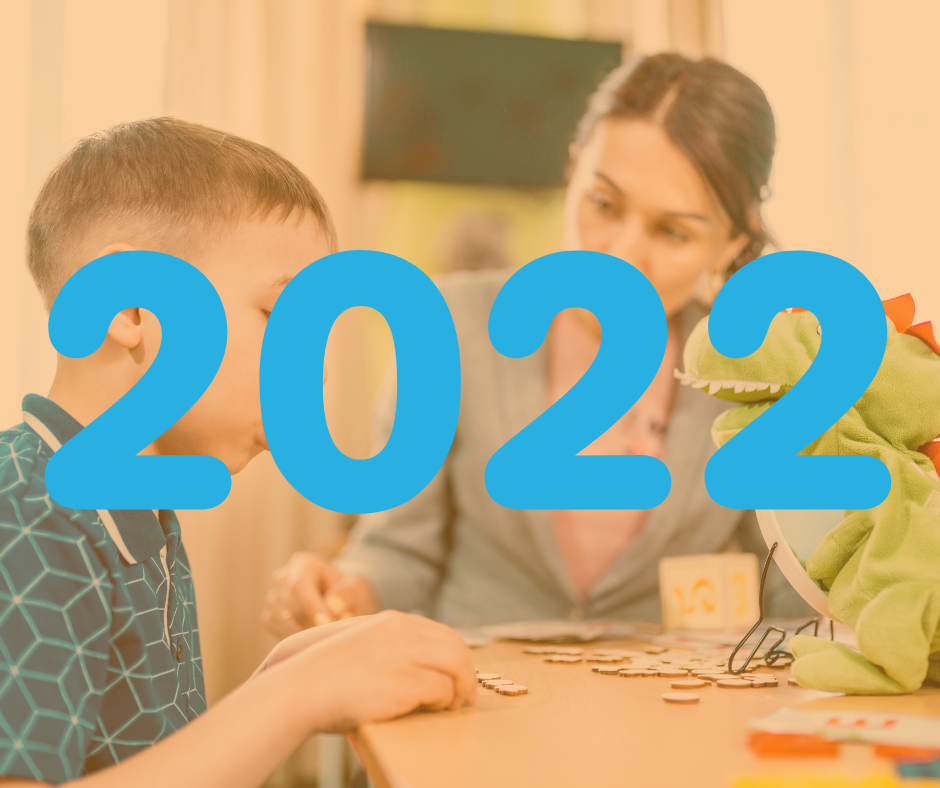

Principle Investigator: Dr. Elizabeth Murray
Other Investigators: Dr. Shelley Velleman, University of Vermont; Dr. Tricia McCabe, University of Sydney and Dr. Jonathan Preston, University of Syracuse
Organization: University of Sydney
State/Province/Country: Sydney, Australia
Funding Amount: $40,000
Title of Research Study: Reliability of Expert Diagnosis of Apraxia of Speech in Children Aged 2-18 Years
Subjects: 92 children aged 2-8 years with moderate-severe speech sound disorders (SSD) including childhood apraxia of speech (CAS) and children aged 8-18 years with CAS or residual speech errors. Each child’s speech tasks were recorded. Each child’s recordings were rated by 3 randomly assigned expert speech-language pathologists (SLPs) using an online rating form to identify the child’s speech features and determine their speech diagnosis. The expert SLPs had a minimum of 5 years working with SSD and CAS and at least 1 peer-reviewed publication or international or national presentation on CAS. They were primarily English speakers and had normal hearing and vision.
Research Question: We sought to determine reliability or agreement among experts on the question – “what is the child’s diagnosis? (1) CAS, (2) CAS + Other [communication diagnosis] or (3) Other (than CAS)”.
Results: Agreement for all three categories was below the ≥ 85% benchmark for percent agreement (Kratchowil et al, 2010) and the ≥ 0.61 benchmark for Fleiss Kappa (Landis and Koch, 1977). Agreement was highest for diagnosis of Other (than CAS). Supplemental analysis found experts used similar features to rate CAS but did not agree on to what extent each feature had to be present in order to diagnose CAS.
Conclusions: Expert SLPs across different clinical and research teams in the US, UK, Australia, and Canada agreed about the presence of features used to rate CAS. However, they did not agree on whether a child actually had CAS or not using recorded footage as some were more conservative than others. Based on this, we need to improve our reliability of expert diagnosis by determining operational definitions and cut offs of CAS features and to support our listening judgments with more objective measures. In the meantime, clinical implications include the need for caution when diagnosing CAS from listening-based assessment tasks (e.g., getting support from more experienced colleagues) and the need to complete comprehensive assessment to determine other potential communication issues and SSDs. Experts used the idea of continua to rate which one is primary for decision making and this could help clinicians.
Principle Investigator: Dr. Elizabeth Murray
Other Investigators: Dr. Shelley Velleman, University of Vermont; Dr. Tricia McCabe, University of Sydney and Dr. Jonathan Preston, University of Syracuse
Organization: University of Sydney
State/Province/Country: Sydney, Australia
Funding Amount: $40,000
Title of Research Study: Reliability of Expert Diagnosis of Apraxia of Speech in Children Aged 2-18 Years
Subjects: 92 children aged 2-8 years with moderate-severe speech sound disorders (SSD) including childhood apraxia of speech (CAS) and children aged 8-18 years with CAS or residual speech errors. Each child’s speech tasks were recorded. Each child’s recordings were rated by 3 randomly assigned expert speech-language pathologists (SLPs) using an online rating form to identify the child’s speech features and determine their speech diagnosis. The expert SLPs had a minimum of 5 years working with SSD and CAS and at least 1 peer-reviewed publication or international or national presentation on CAS. They were primarily English speakers and had normal hearing and vision.
Research Question: We sought to determine reliability or agreement among experts on the question – “what is the child’s diagnosis? (1) CAS, (2) CAS + Other [communication diagnosis] or (3) Other (than CAS)”.
Results: Agreement for all three categories was below the ≥ 85% benchmark for percent agreement (Kratchowil et al, 2010) and the ≥ 0.61 benchmark for Fleiss Kappa (Landis and Koch, 1977). Agreement was highest for diagnosis of Other (than CAS). Supplemental analysis found experts used similar features to rate CAS but did not agree on to what extent each feature had to be present in order to diagnose CAS.
Conclusions: Expert SLPs across different clinical and research teams in the US, UK, Australia, and Canada agreed about the presence of features used to rate CAS. However, they did not agree on whether a child actually had CAS or not using recorded footage as some were more conservative than others. Based on this, we need to improve our reliability of expert diagnosis by determining operational definitions and cut offs of CAS features and to support our listening judgments with more objective measures. In the meantime, clinical implications include the need for caution when diagnosing CAS from listening-based assessment tasks (e.g., getting support from more experienced colleagues) and the need to complete comprehensive assessment to determine other potential communication issues and SSDs. Experts used the idea of continua to rate which one is primary for decision making and this could help clinicians.
Principle Investigator: Julie Case
Other Investigators: Maria Grigos
Research Organization: New York University
State/Province/Country: New York
Year of Funding: 2017
Funding Amount: $5,000
Title: Motoric Complexity in Childhood Apraxia of Speech
Subjects: 24 children age 5;0 to 6;11: 8 children with apraxia of speech (CAS), 8 children with other speech sound disorders (SSD), 8 children with typical development (TD)
Results: A framework of motoric complexity was proposed based on the degree of movement elements involved in consonant-vowel sequences. Results of transcription, acoustic, and kinematic analyses revealed that children with CAS were less accurate and displayed longer and more variable speech movements than the other two groups of children. Despite these group differences, all children displayed differences in speech performance across levels of motoric complexity.
Conclusions: This investigation supported the proposed framework of motoric complexity. As all children demonstrated differences in speech performance across levels of motoric complexity, it was proposed that motoric complexity impacts both the developing system and those with speech impairment. With respect to clinical practice, this work highlights the importance of considering motoric properties of sound sequences when evaluating speech production skills and designing experimental and treatment stimuli.
Read Articles:
Speech Motor Complexity in Childhood Apraxia of Speech
Articulatory Control in Childhood Apraxia of Speech in a Novel Word–Learning Task
Principle Investigator: Dr. Jenya Iuzinni-Seigel
Organization: Marquette University
State/Province/Country: Wisconsin
Year of Funding: 2017
Funding Amount: $30,000
Title: Sequence Learning in Children with childhood apraxia of speech (CAS) with and without Language and Motor Deficits: Does Time Between Sessions Impact Learning Motoric Complexity in CAS?
Subjects: Communication, motor, and procedural learning abilities were assessed in 48 children with CAS (n = 13), SSD (n = 20), and TD (n = 15), between 43 and 97 months age (Mean = 66 months, SD = 12 months).
Results: Overall children with CAS demonstrated slower reaction time compared to the control groups of children with Typical Development (TD) and Speech Sound Disorders (SSD). On average, children with CAS required an increased number of exposures to the sequence to demonstrate procedural learning, consistent with the high production frequency typically required during treatment to make learning gains. Children in the CAS group also evidenced poor motor performance scoring in the “significant motor difficulty” range on the Aiming and Catching, Manual Dexterity and Balance components of the Movement Assessment Battery for Children-2nd Edition. By contrast, group level data from the TD and SSD groups showed performance within the normal range on these components. The CAS group was also characterized by poor language performance and scores in the disordered range on subtests that tap grammar (i.e., Word Structure, Sentence Structure/Sentence Comprehension, and Recalling Sentences).
A subset of children from each group also demonstrated a distinct and unexpected pattern wherein they evidenced an uptick in reaction time during the second sequenced block rather than faster reaction times on each sequenced block. Children in the TD and SSD groups with this pattern did not demonstrate substantive procedural learning at the end of 5 sequenced blocks, whereas the subgroup of children with CAS did, possibly suggesting distinct underlying causes for this pattern in each subgroup.
Conclusions: Our participants with CAS tended to evidence slower reaction times and required more exposures to the sequence to demonstrate procedural learning compared to peers with SSD and TD; in general, however, they did demonstrate learning over the course of the 5 practice blocks. These findings are consistent with the need for high production frequency during treatment sessions for children in this population. The high proportion of children with motor and grammatical impairments in our CAS group also provides support for a comprehensive approach to assessment and treatment in order for children with CAS to thrive.
Read Article:
Motor Performance in Children With Childhood Apraxia of Speech and Speech Sound Disorders
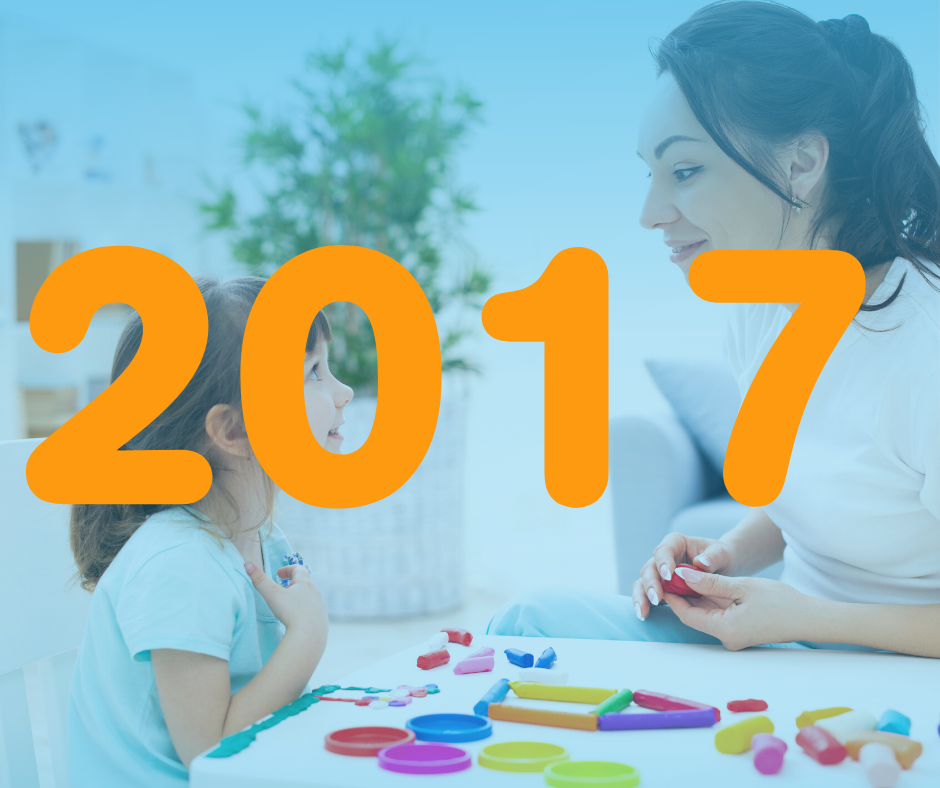

Principle Investigator: Dr. Edwin Maas
Other Investigator: Dr. Christina Gildersleeve-Neumann, Dr. Kathy Jakielski, and Dr. Ruth Stoeckel
Organization: Temple University
State/Province/Country: Pennsylvania
Year of Funding: 2016
Funding Amount: $35,000
Title: Bang for Your Buck: A Systematic Investigation of Amount and Intensity of Practice for Children with Apraxia of Speech
Subjects: 6 children with CAS, ages 4;7 to 11;3
Results: 4 children showed an advantage for high amount of practice, 1 showed an opposite effect, and 1 showed no condition difference. For distribution, 4 children showed a clear advantage for massed over distributed practice post treatment; 1 showed an opposite pattern, and 1 showed no clear difference. Follow-up revealed a similar pattern. All children demonstrated treatment effects (larger gains for treated than untreated items).
Conclusions: High practice amount and massed practice were associated with more robust speech motor learning in most children with CAS, compared to low amount and distributed practice respectively.
Principle Investigator: Dr. Heather Rusiewicz
Organization: Duquesne University
State/Province/Country: Pennsylvania
Year of Funding: 2014
Funding Amount: $30,000
Title: Examining the Impact of Gestures in the Treatment of Childhood Apraxia of Speech
Subjects: 10 individuals with childhood apraxia of speech enrolled in the primary investigation ranging from 3-21 years.
Results:
Single subject design study: According to the perceptual ratings of the treating clinician and twenty-eight naïve listeners, a 21 year old woman with persisting childhood apraxia of speech demonstrated improved speech sound accuracy as a function of the manual mimicry/multisensory therapy (i.e., hand gestures that mirrored the configuration of the speech movements in space and time) for the production of /r/.
Case study: This case study focused specifically on the use of gestural cues in the treatment of speech movement targets for nine children with CAS between the ages of 3;2 and 8;9 (M=5;5; SD=23 months). Manual gesture cues that are spatiotemporally analogous to the target speech sound (i.e., manual mimicry gesture cues) were used within a multisensory therapy approach to enhance speech sound accuracy for five young children with childhood apraxia of speech (CAS). An additional four children with CAS were also provided similar multisensory therapy, but with only the clinician using pointing gestures to the clinician’s mouth, instead of manual mimicry gesture cues. Findings indicated that the manual mimicry gesture group demonstrated signs of improvement for all target phonemes, both in treated and untreated contexts. The largest gains occurred between baseline and the 6th session for all targeted phonemes, however, decreased accuracy was observed for all phonemes at the 12th session and then at the maintenance session. There was little to no improvement noted for unrelated phonemes that were not a focus of therapy.
Conclusions: These data offer preliminary support for the incorporation of manual mimicry gestural cues in therapy for CAS and other SSDs. Manual mimicry gestures potentially benefit learning within the therapeutic context because of the coordination and mutual influence of speech and hand movements, as well as the advantage of embodiment (i.e., movement can enhance learning and retention). Additionally, gestures offer a no-cost technique that can be produced by the client themselves and may reduce the amount of instruction and cognitive load required during therapy. Particularly important for the treatment of CAS, manual mimicry gestures are dynamic and continuous and can mirror speech movement gesture sequences, rather than single, static phonemes. Additional study of the integration of manual mimicry cues in the treatment of CAS and other speech sound disorders (SSD) will offer insight into both evidence based practices related to SSDs, as well as the underlying mechanism of spatiotemporal entrainment of speech and body movements.
Principle Investigator: Dr. Tricia McCabe
Other Investigators: Jonathan Preston, PhD, CPSP Syracuse University & Haskins Laboratories
Research Organization: University of Sydney
State/Province/Country: Sydney, Australia
Year of Funding: 2014
Funding Amount: $35,000
Title: A Pilot Randomized Control Trial Comparing Ultrasound Biofeedback Treatment with Rapid Syllable Transition Training (ReST) in Children with CAS
Subjects: 15 children were randomly allocated to receive one of the treatments (two groups) and 14 children completed the treatment. The children ranged from 6-13 years of age.
Results: All children in both groups made progress on the items that were treated. Some children in both groups made more progress than others. These children were older and had fewer speech problems that the younger or more severe children.
Conclusions: Clinicians and parents should choose the treatment which best addresses their child’s needs. If the child predominantly needs to improve production of sounds, ultrasound feedback is a useful way to teach a child how to make sounds that depend on a particular tongue shape. If the child predominantly needs to learn to speak smoothly with the right rhythm, the ReST treatment can be used to address this issue.
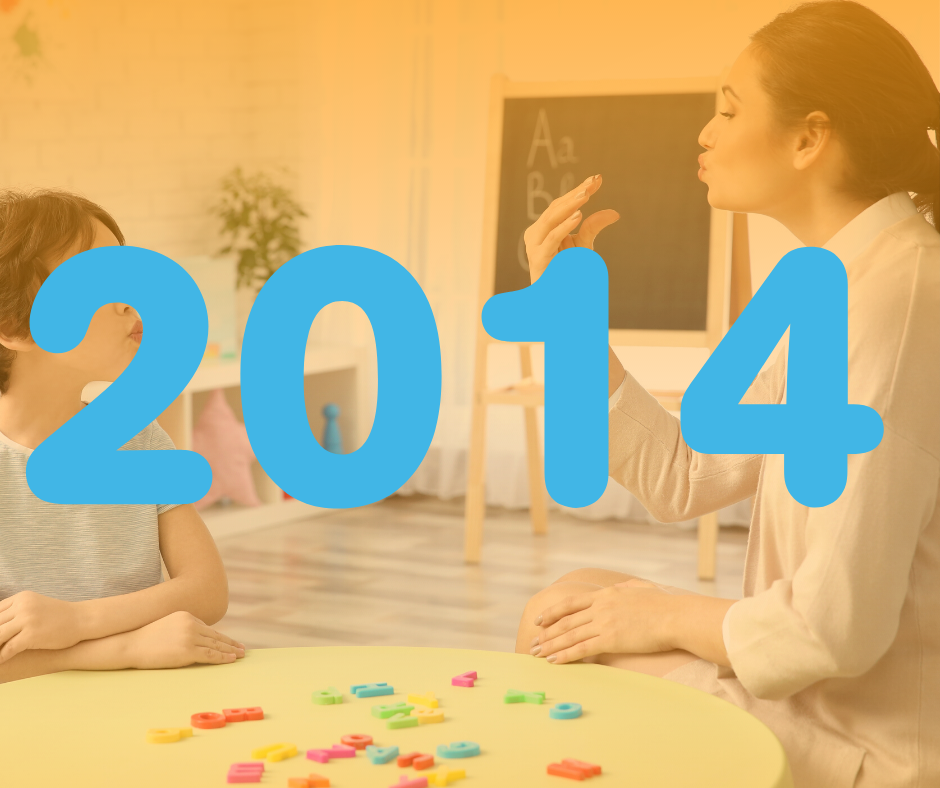

Principle Investigator: Dr. Karen Froud
Research Organization: Teachers College, Columbia University
State/Province/Country: New York
Year of Funding: 2013
Funding Amount: $50,000
Title: Neural Correlates of Speech-Sound Representation in Children with Childhood Apraxia of Speech
Subjects: 8 children with CAS who met study criteria and 6 control participants matched to the CAS participants on age and SES
Results: The study aimed to examine the brain responses of children with CAS when they are listening to speech sounds, other kinds of complex sounds that don’t carry linguistic information, and simple sounds like tones. By doing this, the investigators hoped to understand more about how children with CAS perceive and process speech.
Conclusions: The study results show that children who have CAS do show different kinds of brain activation in response to speech sounds, compared to their typically-developing peers. In particular, it seems that children with speech sound production difficulties use both sides of the brain to handle speech sound recognition, while children who do not have CAS use the left hemisphere of the brain only, which is known to be specialized for speech and language. These findings suggest that there is more to CAS than just a problem with producing speech.
Read Article:
Mismatch Negativity Responses in Children With a Diagnosis of Childhood Apraxia of Speech (CAS)
Principle Investigator: Dr. Susan Rvachew
Other Investigator: Dr. Caroline Erdos
Research Organization: McGill University
State/Province/Country: Quebec
Year of Funding: 2012
Funding Amount: $25,000
Title: Comparison of Alternative Prepractice Conditions in the Treatment of Childhood Apraxia of Speech using a Single Subject Randomization Design
Subjects: For this study we recruited English-speaking children from SLP caseloads with suspected or confirmed childhood apraxia of speech (CAS). After extensive assessment at intake we confirmed that 17 met common checklist criterias for a CAS diagnosis. Of those, 12 children, ages 3;7 to 8;9 completed our treatment protocol (18 treatment sessions, 3 per week over 6 weeks, using a randomized single subject alternating treatments design).
Results: Using diagnostic criteria that relied primarily on the Syllable Repetition Task and performance on the Word Inconsistency Task we classified the children as having a phonological planning disorder or a motor planning disorder. Specifically children who could not remember a longer sequence of syllables during the syllable repetition task were diagnosed with a phonological planning problem. Children who had difficulty coordinating the sounds and syllables during the syllable repetition task were diagnosted with a motor planning task. We predicted that these two subgroups of children would show a different response to the different types of treatment that we provided. All the children received a treatment in which they were taught to segment words in individual speech sounds, associate those sounds with visual symbols, and then recombine those sounds into words. This treatment was unique in that the children were taught to use the visual cues as their primary means of remembering the new words and the order of sounds in those words. Children with a phonological planning disorder responded best to this treatment. All the children received a treatment in which they were taught to listen carefully to whole words and identify speech errors in those words. They were encouraged to listen to their own speech and correct their own errors. During speech practice, imitating the SLP’s model was a primary strategy for helping the children produce the words correctly. Children with a motor planning disorder responded best to this treatment.
Conclusions: It is very important to understand that children who meet standard criteria for Childhood Apraxia of Speech do not all have the same kind of planning disorder. Some of those children have a problem with remembering, retrieving and ordering the speech sounds in words. They need a treatment program that helps them to remember and order sounds at an abstract level. Other children have a problem coordinating speech motor gestures. They need to learn to use instrinsic feedback to guide the movements of their articulators and achieve speech motor control.
Read Article:
An N-of-1 Randomized Controlled Trial of Interventions for Children With Inconsistent Speech Sound Errors
Principle Investigator: Dr. Maria Grigos
Co-Investigator: Julie Case
Research Organization: New York University
State/Province/Country: New York
Year of Funding: 2012
Funding Amount: $25,000
Title: Speech Motor Learning in Children with Apraxia
Subjects: 16 children, ages 5;0 to 6; 10 years (8 children with CAS, 8 children with typical speech and language development (TD)
Results: During a novel word-learning task, children with CAS displayed short- and long-term improvements in consonant/vowel accuracy and consistency; however, their performance remained consistently poorer than the TD control group. Articulatory control was also examined in whole words (Case & Grigos, 2016) and in movement transitions at the syllable level (Grigos & Case, 2018). At the whole word level, the children with CAS demonstrated longer duration of jaw movement than TD controls across each of the three time periods. Further, articulator movement variability remained high in the CAS group across all sessions, while children in the TD group produced more stable movements. When looking only at the movement transition within syllables, children with CAS displayed larger opening movements combined with decreased movement variability over the practice period. No changes were observed in the TD group.
Conclusions: Children with CAS displayed a learning effect for consonant accuracy and consistency. Lack of change in movement variability at the whole word level may indicate that children with CAS require additional practice to demonstrate changes in speech motor control, even within production of novel word targets with greater consonant and vowel accuracy and consistency. Changes in speech motor control at the syllable level, however, suggest that children with CAS refine movements at the level of the movement gesture prior to demonstrating changes in speech motor control across longer movement sequences, such as words.
Read Articles:
Changes in movement transitions across a practice period in childhood apraxia of speech
Articulatory Control in Childhood Apraxia of Speech in a Novel Word-Learning Task
Principle Investigator: Dr. Jenya Iuzinni-Seigel
Other Investigators: University of Nebraska/MGH Institute of Health Professions
Research Organization: University of Nebraska/MGH Institute of Health Professions
State/Province/Country: Nebraska and Mass.
Year of Funding: 2012
Funding Amount: $12,500
Title of Research Study: Optimal Diagnostic Criteria for CAS in School-aged Children: A Multilevel Approach
Subjects: 22 children with childhood apraxia of speech (CAS), 10 children with speech delay (SD), and 10 with typical development (TD) ranging in age between 6;2 and 17;8
Results: The current data provide preliminary evidence that school-aged children with CAS and SD vary in their display of the ASHA features, which appears to depend, in part, on qualities of the stimuli items that are used to elicit the features. Findings from this dataset also show that poor speech perception is not associated with the core deficit of CAS, but rather, is associated with language impairment that co-occurs in the majority of children with CAS. Finally, we found that children with CAS tend to rely on auditory feedback for production of clear speech whereas those with SD and TD did not demonstrate a substantial discrepancy in their voice onset time or vowel space area when auditory feedback was masked.
Conclusions: We found that type of stimuli matters when eliciting CAS features. Specifically, some stimuli items, such as multisyllabic real words, were highly inconsistent for children with CAS and SD. In contrast, monosyllabic real words were only inconsistent for children with CAS, not for children with SD. Repeated production (5x) of the phrase “Buy Bobby a puppy” was also sensitive and specific in differentiating children with CAS and SD. Children with SD were highly consistent in producing this phrase, whereas children with CAS tended to be inconsistent. Although this phrase seems fairly simple, it taxes areas of challenge for children with CAS: specifically, the voicing distinction, vowels, and coarticulatory transitions between sounds and words. Findings from this dataset also reveal the importance of controlling for linguistic ability when analyzing data from children with CAS.
Read Articles:
Speech Inconsistency in Children With Childhood Apraxia of Speech, Language Impairment, and Speech Delay: Depends on the Stimuli
Reliance on auditory feedback in children with childhood apraxia of speech
Poor Speech Perception Is Not a Core Deficit of Childhood Apraxia of Speech: Preliminary Findings
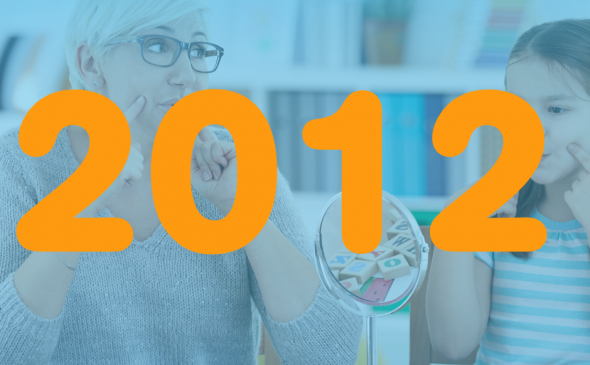
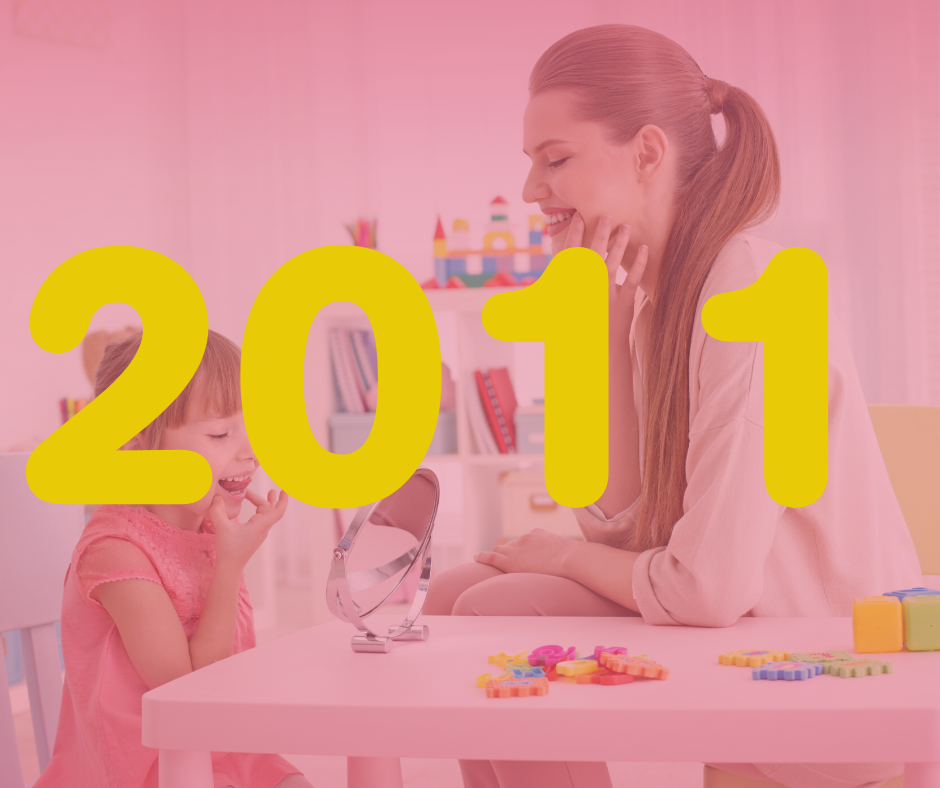
Principle Investigator: Aravind Namasivayam Ph.D., S-LP (C)., Reg. CASLPO (Speech and Stuttering Institute; Department of Speech–Language Pathology, University of Toronto, Canada)
Other Investigators: Robert Kroll (The Speech and Stuttering Institute, Toronto, ON, Canada); Margit Pukonen (The Speech and Stuttering Institute, Toronto, ON, Canada); Debra Goshulak (The Speech and Stuttering Institute, Toronto, ON, Canada); Jennifer Hard (ErinoakKids Centre for Treatment and Development, Mississauga, ON, Canada); Frank Rudzicz (Toronto Rehabilitation Institute, Toronto, ON, Canada); Toni Rietveld (Radboud University, Nijmegen, the Netherlands); Ben Maassen (University of Groningen, Groningen, the Netherlands); Pascal van Lieshout (Department of Speech–Language Pathology, University of Toronto, Canada)
Research Organization: Speech and Stuttering Institute
State/Province/Country: Toronto, Ontario, Canada
Year of Funding: 2011
Funding Amount: $25,000
Title: Exploring the Relationship Between Treatment Intensity and Treatment Outcomes in Children with Apraxia of Speech
Subjects: 37 children (32–54 months of age) with CAS diagnosis
Results: Overall, the results indicate that high-intensity treatment (Dose frequency: 2x/week for 10 weeks) yields significant pre-post change (for articulation, functional communication and word-level speech intelligibility), larger effect sizes and lower failure rates (for articulation) when compared to low-intensity treatment (Dose frequency: 1x/week for 10 weeks) for children with CAS. However, even with high-intensity treatment, these children do not seem to improve in sentence-level connected speech intelligibility.
Conclusions: The study demonstrates that an eclectic (real-world) motor speech treatment protocol results in a larger positive/significant change when delivered in a high-than low-intensity 10-week intervention block. The present data allows us to refine and potentially guide clinical practice (e.g. service delivery models for this population). We have been successful in developing two critical tools which speech langauge pathologists will be able to use with CAS/motor speech population. The first is a screening tool developed to identify children with CAS features. The second is a checklist for monitoring treatment integrity related to motor speech treatment. Both these tools have enormous potential to be used for both clinical and research purposes.
Read Article:
Treatment intensity and childhood apraxia of speech
Principle Investigator: Dr. Jonathan Preston
Other Investigators: Nicole Landi, PhD
Research Organization: Haskin Laboratories
State/Province/Country: Connecticut
Year of Funding: 2011
Funding Amount: $25,000
Title: Biofeedback Training for Children with Persisting CAS: Articulatory and Neural Changes
Subjects: 6 children ages 9-15
Results: All participants met criterion for at least two treated sound sequences and it took an average of five sessions to reach criterion. The average increase between pre- and post-treatment accuracy was 53% across all treated sequences. Some participants showed significant generalization to untreated sequences that were phonetically similar to treated sequences. Most treatment effects were maintained at a two-month follow-up.
Conclusions: Ultrasound biofeedback is a viable treatment option for improving speech sound accuracy in children with persisting speech sound errors associated with CAS.
Read Article:
Ultrasound Biofeedback Treatment for Persisting Childhood Apraxia of Speech
Principle Investigator: Dr. Philip Dale
Other Investigators: Dr. Deborah Hayden
Research Organization: University of New Mexico
State/Province/Country: New Mexico
Year of Funding: 2010
Funding Amount: $12,000
Title: The Effectiveness of PROMPT in Treating Children with Childhood Apraxia of Speech
Subjects: 4 children (3.6-4.8)
Results: Two of the four children received treatment during the first 4 weeks that included all Prompts for Restructuring Oral Muscular Phonetic Targets (PROMPT) components except tactile-kinesthetic-proprioceptive (TKP) cues, which permitted analysis of the effect of TKP cues specifically as well as the complete PROMPT program. All children made significant gains during 8 weeks of 2x week treatment, but measures of motor speech control and untreated word probes provided evidence for more gain when tactile cues were included.
Conclusions: PROMPT as a whole appears to be effective for treating children with CAS. The results provide some modest evidence that while the components of PROMPT other than tactile cues are effective in themselves, tactile cues add to their effectiveness. More definitive evaluation will require a larger number of children, and a longer period of treatment.
Read Article:
Treating Speech Subsystems in CAS with Tactual Input: The PROMPT Approach
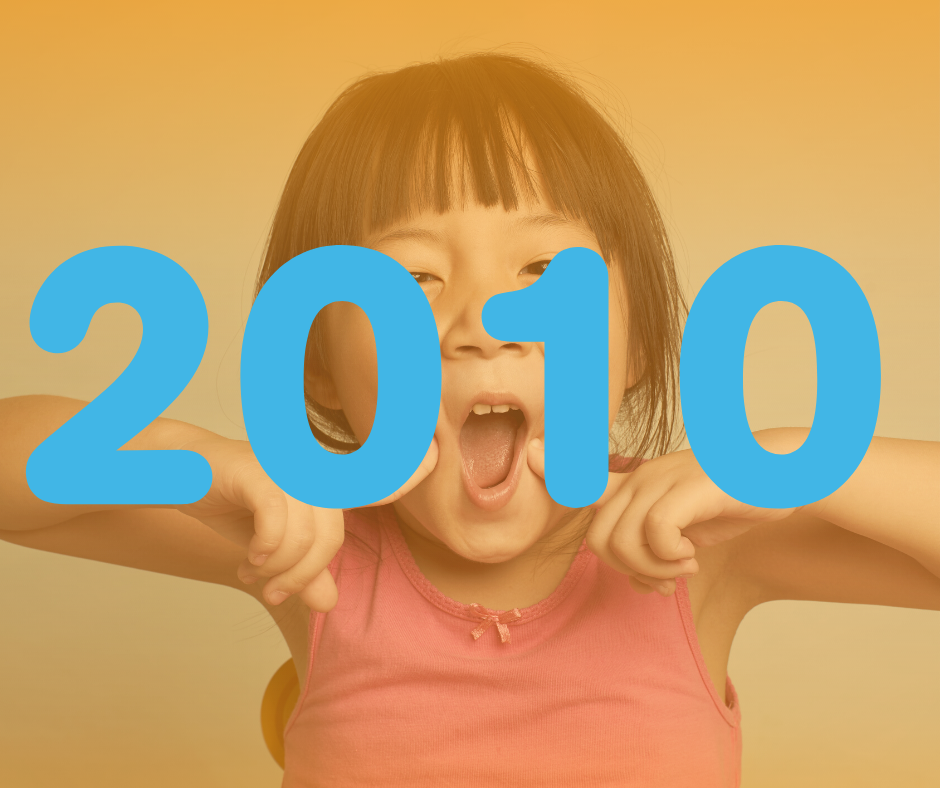
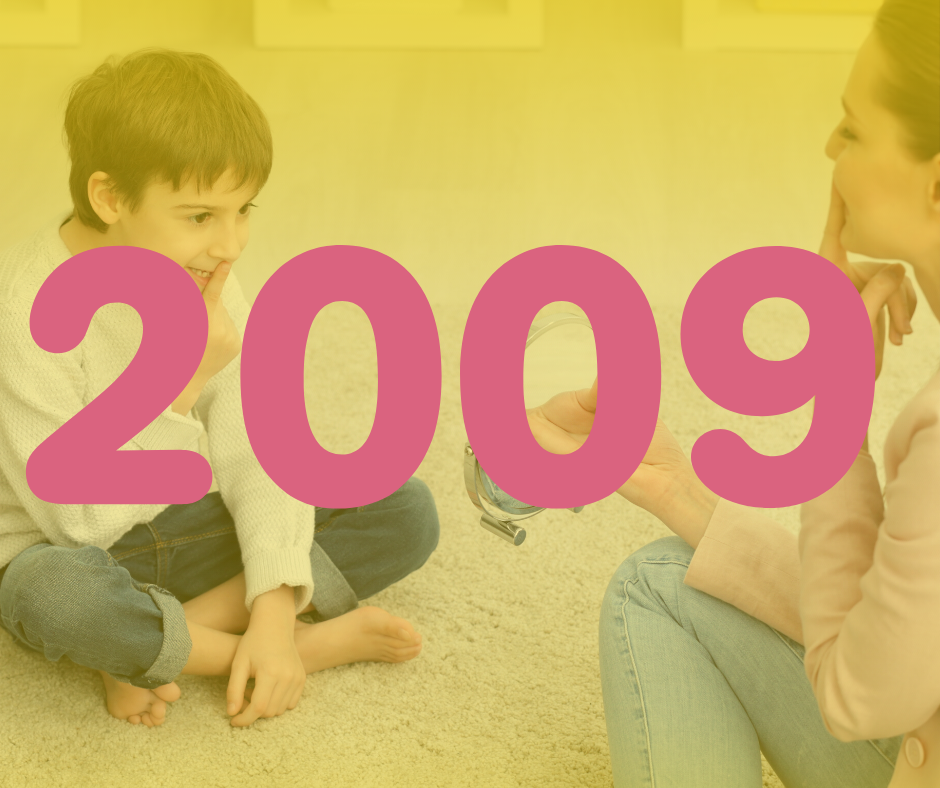
Principle Investigator: Dr. Edwin Maas
Other Investigators: Dr. Kimberly A. Farinella
Research Organization: University of Arizona
State/Province/Country: Arizona
Funding Amount: $12,000
Title of Research Study: Practice Schedule and Feedback Frequency in Treatment for Childhood Apraxia of Speech
Subjects: Study 1 (practice schedule): 4 monolingual English children w/ CAS 5;0 to 7;9 in age; Study 2 (feedback frequency): 4 monolingual English children w/CAS 5;4 to 8;4 in age (3 same as in Study 1)
Results: Study 1: Findings were mixed, with 1 child showing a clear advantage for random practice, 2 showing a slight net advantage for blocked practice, and 1 child showing no clear effects in either condition. Conclusion: These findings suggest that some children may show a clear benefit of random practice (consistent with the motor learning literature), but that effects of practice schedule may not be the same across children. Anecdotally, children and clinicians preferred the random practice schedule. Three of the children showed clear treatment effects compared to untreated items, supporting the overall efficacy of this integral stimulation-based approach.
Study 2: Findings were mixed, with 2 children showing an advantage for low-frequency feedback, 1 child showing a small advantage for high-frequency feedback, and 1 child showing no clear improvement in either condition. Conclusion: These findings suggest that reducing the frequency of feedback may be beneficial for some children with CAS, although this may vary with the child’s age or severity of apraxia. Caution is warranted in extrapolating from the nonspeech motor learning literature to speech treatment for CAS. Finally, this study contributes another replication to the literature on the efficacy of integral stimulation treatment for children with CAS.
Conclusion: These two treatment studies indicate that the condition effects that were clear were consistent with expected effects from the motor learning literature: an advantage of random practice over blocked practice (Study 1) and an advantage of reduced feedback frequency over high-frequency feedback. However, not all children showed these effects: some showed small or inconsistent benefits in the opposite direction, and some showed no differences at all. Further research is needed to determine the child-related factors that predict the optimal practice schedule and feedback frequency.
Read Articles:
Feedback Frequency in Treatment of CAS
Random Versus Blocked Practice in Treatment for Childhood Apraxia of Speech


